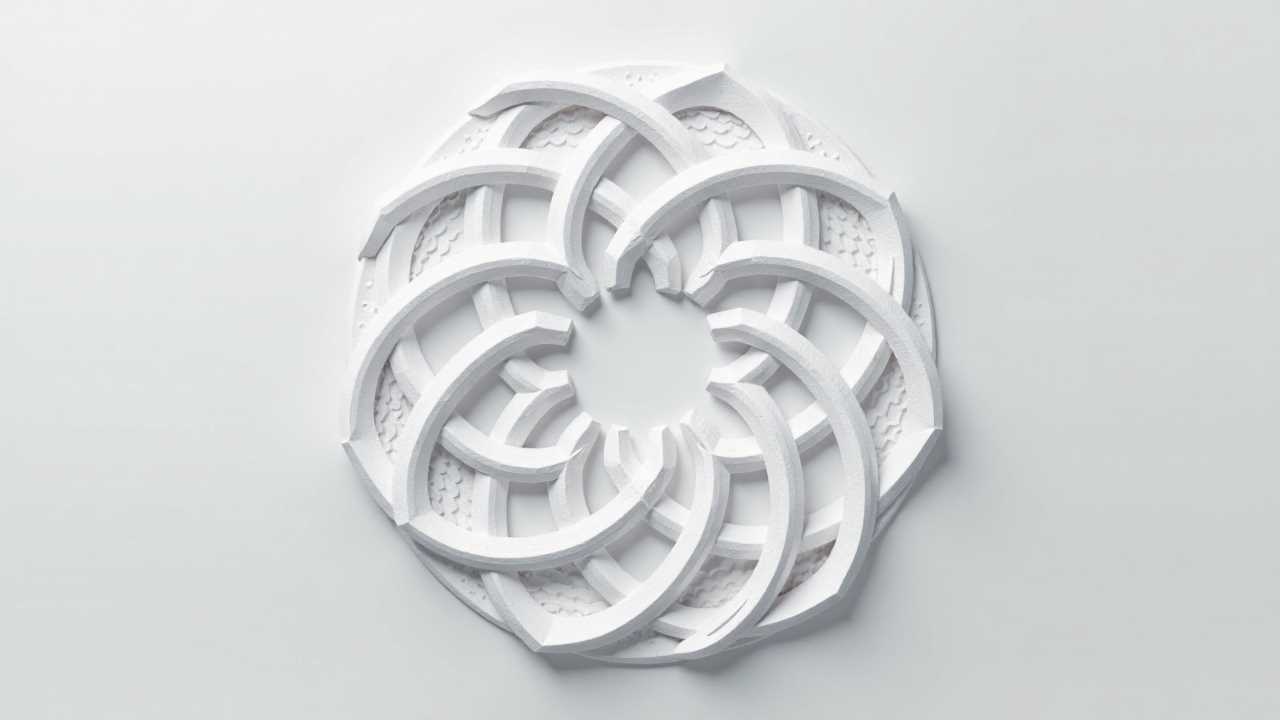
Understanding Geometric Logo Design
In the realm of branding, geometric logo design stands out as a powerful tool for creating memorable and impactful visual identities. This design style employs custom shapes and unique patterns to convey a brand's essence, values, and mission in a visually striking manner. By utilizing geometric elements, businesses can establish a strong presence in their respective markets, making it easier for consumers to recognize and remember them.
Geometric logos are characterized by their clean lines, symmetry, and balance. These features not only enhance the aesthetic appeal but also communicate a sense of professionalism and reliability. When executed effectively, geometric logos can become iconic symbols that resonate with audiences, fostering a deeper connection between the brand and its customers.
The Importance of Custom Shapes in Logo Design
Custom shapes play a pivotal role in the creation of a distinctive logo. Unlike generic designs that may blend into the background, custom shapes allow brands to express their individuality and uniqueness. By incorporating tailored graphics, businesses can differentiate themselves from competitors, making their logos instantly recognizable.
When designing a logo, it is essential to consider the shapes that best represent the brand's personality. For instance, a tech company might opt for angular shapes to convey innovation and precision, while a wellness brand may choose softer, rounded shapes to evoke feelings of calm and tranquility. The choice of shapes can significantly influence how a brand is perceived, making it crucial to align them with the overall branding strategy.
Creating Unique Patterns for Visual Impact
Incorporating unique patterns into geometric logo design adds an extra layer of depth and intrigue. Patterns can enhance the visual complexity of a logo, drawing the viewer's attention and encouraging them to engage with the brand. By using distinctive motifs, designers can create logos that not only stand out but also tell a story.
Patterns can be derived from various sources, including nature, architecture, or cultural symbols. The key is to select patterns that resonate with the brand's identity and values. For example, a sustainable fashion brand might use organic patterns inspired by nature, while a modern art gallery could opt for abstract geometric patterns that reflect contemporary artistic trends.
Tailored Graphics for Individualized Branding
Tailored graphics are essential for creating a cohesive and individualized branding experience. A logo is often the first point of contact between a brand and its audience, making it vital to ensure that it accurately represents the brand's ethos. By utilizing tailored graphics, businesses can create logos that reflect their unique story and mission.
When designing tailored graphics, it is important to consider the target audience and the emotions the brand aims to evoke. A logo for a children's toy company, for example, might feature playful shapes and bright colors to appeal to young audiences and their parents. In contrast, a luxury brand may opt for minimalist designs with elegant lines and muted colors to convey sophistication and exclusivity.
Distinctive Motifs: Adding Character to Your Logo
Incorporating distinctive motifs into geometric logo design can significantly enhance the brand's character. Motifs serve as visual anchors that can convey specific messages or themes associated with the brand. By carefully selecting and integrating motifs, designers can create logos that resonate with the audience on a deeper level.
For instance, a logo for an eco-friendly brand might feature motifs inspired by leaves or trees, symbolizing sustainability and a commitment to the environment. On the other hand, a tech startup may choose motifs that represent connectivity and innovation, such as circuit patterns or digital elements. The right motifs can elevate a logo from being merely decorative to becoming a meaningful representation of the brand's values.
Creative Symbols: The Heart of Geometric Logo Design
At the core of geometric logo design are creative symbols that encapsulate the essence of a brand. Symbols are powerful visual elements that can convey complex ideas and emotions in a simple and effective manner. When designing a logo, it is crucial to select symbols that align with the brand's identity and resonate with the target audience.
Creative symbols can take many forms, from abstract shapes to recognizable icons. The key is to ensure that the symbol is not only visually appealing but also meaningful. For example, a logo for a health and wellness brand might incorporate a symbol representing balance or harmony, while a financial institution may choose a symbol that conveys stability and trust.
The Power of Geometric Logo Design
In summary, geometric logo design is a powerful tool for crafting distinctive branding that resonates with audiences. By utilizing custom shapes, unique patterns, tailored graphics, individualized branding, distinctive motifs, and creative symbols, businesses can create logos that not only stand out but also communicate their core values and mission.
As the visual landscape continues to evolve, the importance of a well-designed logo cannot be overstated. A thoughtfully crafted geometric logo can serve as a cornerstone of a brand's identity, fostering recognition, loyalty, and trust among consumers. By investing in quality design, businesses can ensure that their branding remains relevant and impactful in an ever-changing marketplace.
 Digital Art InstructionDIY Infographics DesignMobile Game ArtworkPersonalized Logo Design3D AnimationeBook Covers DesignPrivacy PolicyTerms And Conditions
Digital Art InstructionDIY Infographics DesignMobile Game ArtworkPersonalized Logo Design3D AnimationeBook Covers DesignPrivacy PolicyTerms And Conditions
